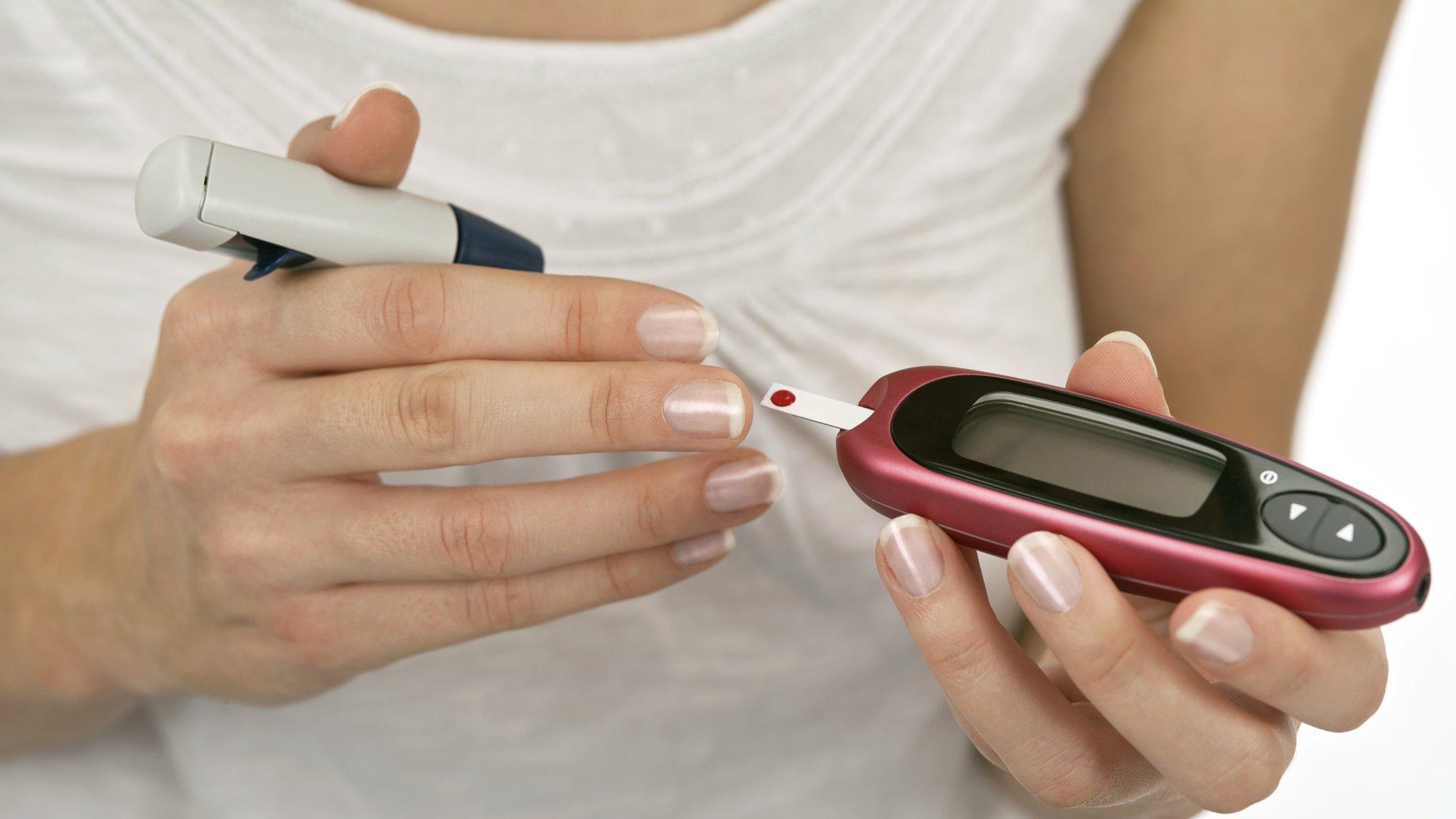Diabetic sight loss cut by screening, research shows
- Published
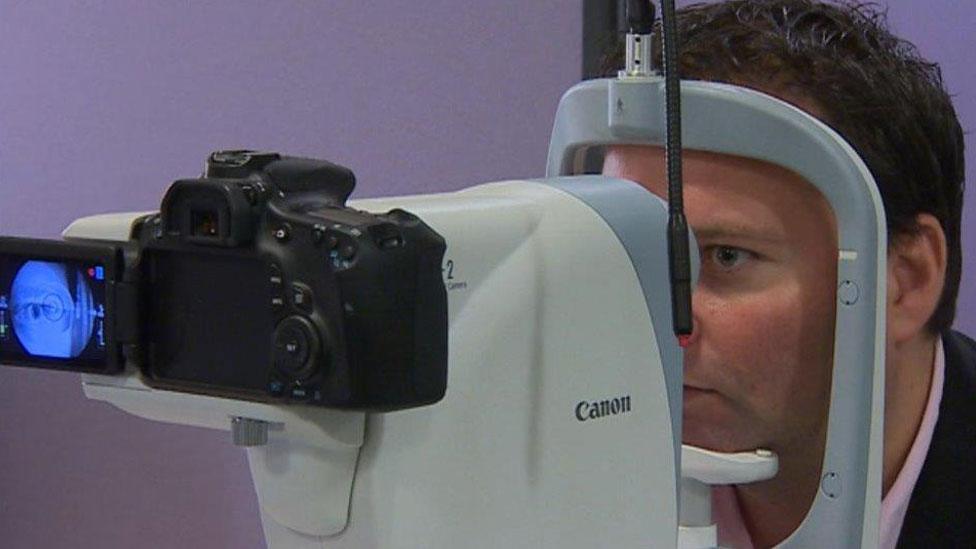
There are still 20% of diabetics who do not take up the offer of annual eye screening
The proportion of diabetics who go blind or suffer sight loss has almost halved since a new national retinopathy screening programme started in 2007.
Swansea University research over eight years has now been published in the British Medical Journal. , external
New certifications for severe sight impairment have fallen from 31.3 to 15.8 per 100,000 people.
Diabetics aged over 12 are offered annual screening and health experts said the study shows a "clear benefit".
Retinopathy, external is damage to the retina in the back of the eye and is a complication which can affect people with diabetes. Persistent high levels of glucose can lead to eye damage.
The research shows:
There were 339 fewer new certifications for all levels of sight loss from any cause combined in 2014-15, compared with 2007-08
It is calculated that the sight of 22 people has been saved
The results are despite 52,229 (40%) more people being diagnosed with diabetes in Wales during the research period
However, 20% of those offered the screening - which began in 2003 and was rolled out across Wales by 2007 - do not take it up.
Dr Quentin Sandifer, medical director of Public Health Wales, said: "We would encourage people living with diabetes to take up the offer when they receive their invitation.
"This is a great example of the NHS working together to improve outcomes for our population and is especially impressive as sight loss has reduced even through the number of people diagnosed with diabetes in Wales has increased over this time."

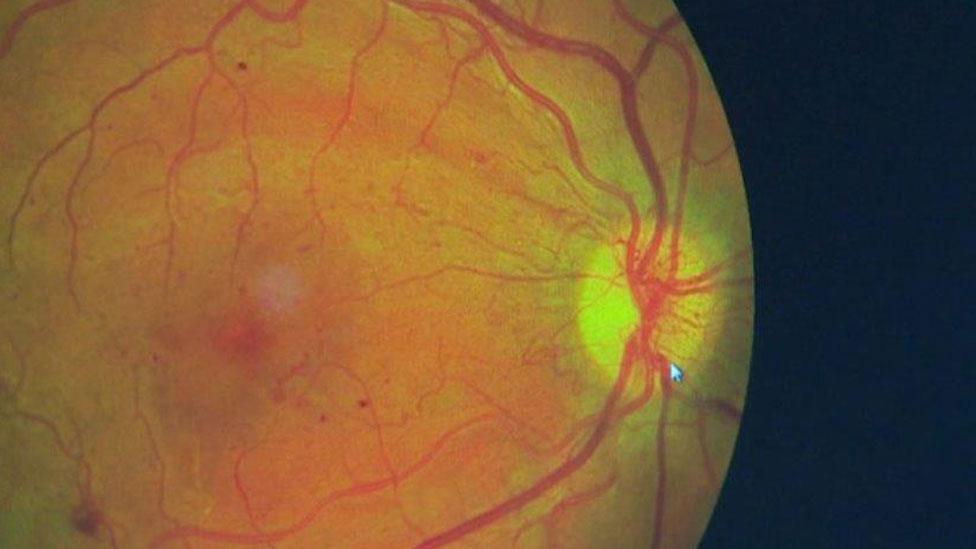
Retinopathy looks like this when screened
WHAT IS DIABETES?
People with type 1 diabetes cannot produce insulin. No-one knows exactly what causes it, but it is not to do with being overweight and it is not currently preventable. It usually affects children or young adults, starting suddenly and getting worse quickly. Type 1 diabetes is treated by daily insulin doses, a healthy diet and regular physical activity.
People with type 2 diabetes do not produce enough insulin or the insulin they produce does not work properly (known as insulin resistance). They might get diabetes because of their family history, age and ethnic background. They are also more likely to get type 2 diabetes if they are overweight. Type 2 diabetes is treated with a healthy diet and increased physical activity.
How many have diabetes? Diabetes Wales , externalestimates there are 183,000 people in Wales living with diabetes, while at least another 70,000 people could have it but are unaware or undiagnosed.
Diabetic retinopathy or "retinopathy" when it is spotted it can be treated and deterioration prevented, whether controlled through medication or laser treatment.

Robert Lee, from Cardiff, has been having annual checks since he was diagnosed with diabetes in 2004
Robert Lee, 65, from Cardiff, has been having screenings since 2004 and runs a patient support group.
"I've seen people with serious eye problems and I've heard people say, if they'd known earlier it could have prevented these complications," he said.
"If by screening we can make sure we don't progress to that level, it's very important and it's a great service."
Prof David Owens, from the Diabetes Research Unit Cymru at Swansea University Medical School, said with the proportion of the population with diabetes expected to double in the next 25 years, the screening had already made a "major difference" and was the most dramatic seen anywhere in the UK.
"If you have long-term diabetes - high blood sugar for a very long time - you will have damage to the small blood vessels at the back of the eye which supply all the blood and nutrition to the retina, which is essential," he said.
"The essence of the screening is diagnosing it early before it has a huge impact on vision and it can be treated relatively simply and successfully."
Public Health Minister Rebecca Evans said the research showed the significance of earlier diagnosis, alongside improved diabetes management, referral and newer treatments.
- Published13 June 2016
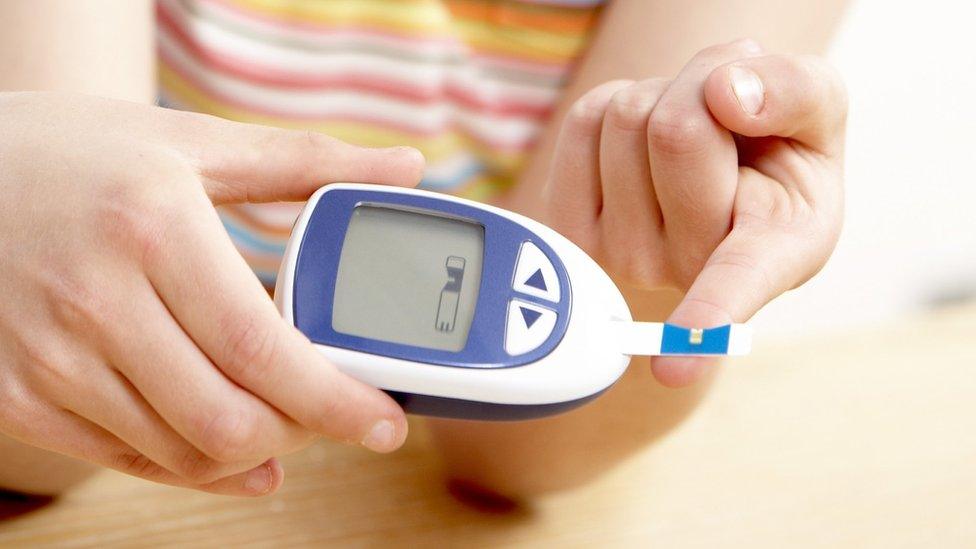
- Published26 July 2017
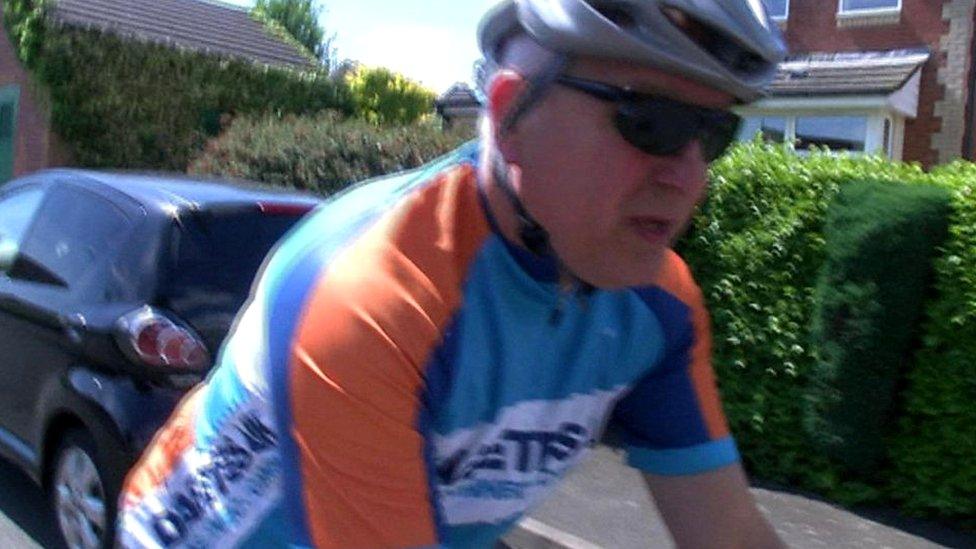
- Published26 September 2013
